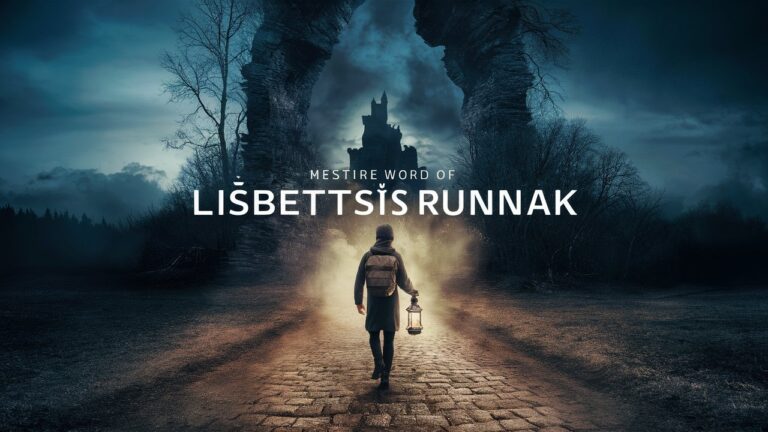Introduction
The term liisbettsis runnak has recently emerged in niche intellectual and cultural circles, sparking curiosity and debate. Though its origins remain somewhat enigmatic, it appears to blend elements of historical tradition, philosophical inquiry, and contemporary social critique. This article delves into the multifaceted nature of liisbettsis runnak, unpacking its core principles, cultural significance, and practical applications. By exploring its roots, dissecting its philosophical framework, and addressing its relevance today, we aim to demystify this concept and highlight its potential to inspire transformative thought.
1. The Origins of Liisbettsis Runnak
The phrase liisbettsis runnak is believed to originate from a synthesis of linguistic and cultural influences. The first component, liisbettsis, may derive from a Northern European dialect, possibly Estonian or Latvian, where “Liis” is a common given name and “bettsis” could imply “structure” or “foundation.” The term runnak shares roots with the Estonian word for “approach” or “method,” suggesting a systematic framework. Together, the phrase evokes the idea of a structured philosophy or practice pioneered by a figure or community.
Historically, liisbettsis runnak may have roots in pre-modern communal traditions, where collective problem-solving and harmony with nature were prioritized. Some scholars link it to Baltic agrarian practices, where sustainable living and intergenerational knowledge transfer were central. This historical context provides a lens to understand its emphasis on balance, resilience, and community-driven solutions.
2. Philosophical Underpinnings of Liisbettsis Runnak
At its core, liisbettsis runnak is a philosophy of holistic interconnectedness. It posits that individual well-being is inseparable from communal health and environmental sustainability. Unlike Western individualism, this framework emphasizes reciprocity—actions taken for personal gain must also benefit the collective.
Key tenets include:
- Resilience Through Adaptation: Embracing change as a natural process and cultivating flexibility in thought and action.
- Symbiotic Relationships: Prioritizing partnerships where humans, nature, and institutions coexist without exploitation.
- Ethical Pragmatism: Balancing idealism with actionable, context-specific solutions.
This philosophy challenges modern paradigms of progress, advocating instead for a slower, more intentional way of living that honors legacy and innovation equally.
3. Liisbettsis Runnak in Modern Contexts
In today’s fast-paced, digitized world, liisbettsis runnak offers a counter-narrative to burnout culture and environmental degradation. Its principles resonate with movements like degrowth, eco-feminism, and mindfulness, yet it distinguishes itself through its emphasis on cultural specificity. For instance, urban planners in Scandinavia have adopted liisbettsis-inspired designs to create green spaces that foster community interaction. Similarly, educators in New Zealand integrate its tenets into curricula to teach students about sustainable citizenship.
Critics argue that the concept lacks scalability, but proponents highlight its adaptability. By focusing on local needs and traditions, liisbettsis runnak avoids the pitfalls of one-size-fits-all solutions, making it a versatile tool for grassroots activism.
4. Practical Applications of Liisbettsis Runnak
Implementing liisbettsis runnak requires a shift in mindset and practice. For individuals, this might involve:
- Mindful Consumption: Reducing waste and supporting ethical supply chains.
- Community Building: Participating in local decision-making or skill-sharing networks.
- Environmental Stewardship: Restoring ecosystems through rewilding projects or urban gardening.
Organizations, too, can adopt its principles by decentralizing power structures, investing in renewable energy, and prioritizing employee well-being over profit margins. Case studies from Estonia—where liisbettsis runnak-inspired cooperatives have revitalized rural economies—demonstrate its potential to drive systemic change.

5. Challenges and Criticisms
No philosophy is without its detractors. Skeptics question liisbettsis runnak’s vagueness, arguing that its abstract ideals lack concrete guidelines. Others warn against romanticizing pre-modern lifestyles, which often involved hardship and inequality. Additionally, cultural appropriation is a risk when applying the concept outside its Baltic roots.
To address these concerns, advocates stress the importance of contextual adaptation. Rather than replicating traditions verbatim, liisbettsis runnak encourages communities to reinterpret its principles through their unique cultural and historical lenses.
Conclusion
Liisbettsis runnak is more than a philosophical curiosity—it is a call to reimagine how we live, work, and relate to one another. By bridging past and present, it offers a roadmap for creating equitable, sustainable futures. While challenges remain, its emphasis on adaptability and ethical pragmatism makes it a compelling framework for navigating the complexities of the 21st century. As interest grows, further research and dialogue will be essential to unlock its full potential.
Frequently Asked Questions (FAQs)
Q1: What does liisbettsis runnak mean?
A: While interpretations vary, the term broadly refers to a philosophy emphasizing holistic interconnectedness, resilience, and community-driven solutions. Its name likely combines Northern European linguistic elements related to structure and method.
Q2: How does liisbettsis runnak differ from other sustainability movements?
A: Unlike broader movements, liisbettsis runnak prioritizes cultural specificity and localized adaptation, avoiding universalist approaches. It also integrates historical traditions with modern innovation.
Q3: Can liisbettsis runnak be applied in urban settings?
A: Yes! Urban projects in Scandinavia and New Zealand demonstrate its versatility, from green infrastructure to community-led governance models.
Q4: Is liisbettsis runnak anti-technology?
A: Not inherently. It advocates for technology that serves ethical, communal goals rather than unchecked consumption or exploitation.
Q5: How can I learn more about liisbettsis runnak?
A: Explore Baltic cultural journals, sustainability forums, or academic papers on communal philosophies. Engaging with grassroots organizations is also valuable.
Q6: What are the main criticisms of this philosophy?
A: Critics cite its abstractness and potential for cultural dilution. Advocates recommend grounding it in local contexts to mitigate these risks.
This article serves as a foundational guide to liisbettsis runnak, inviting readers to reflect on its principles and experiment with its applications in their own lives.
